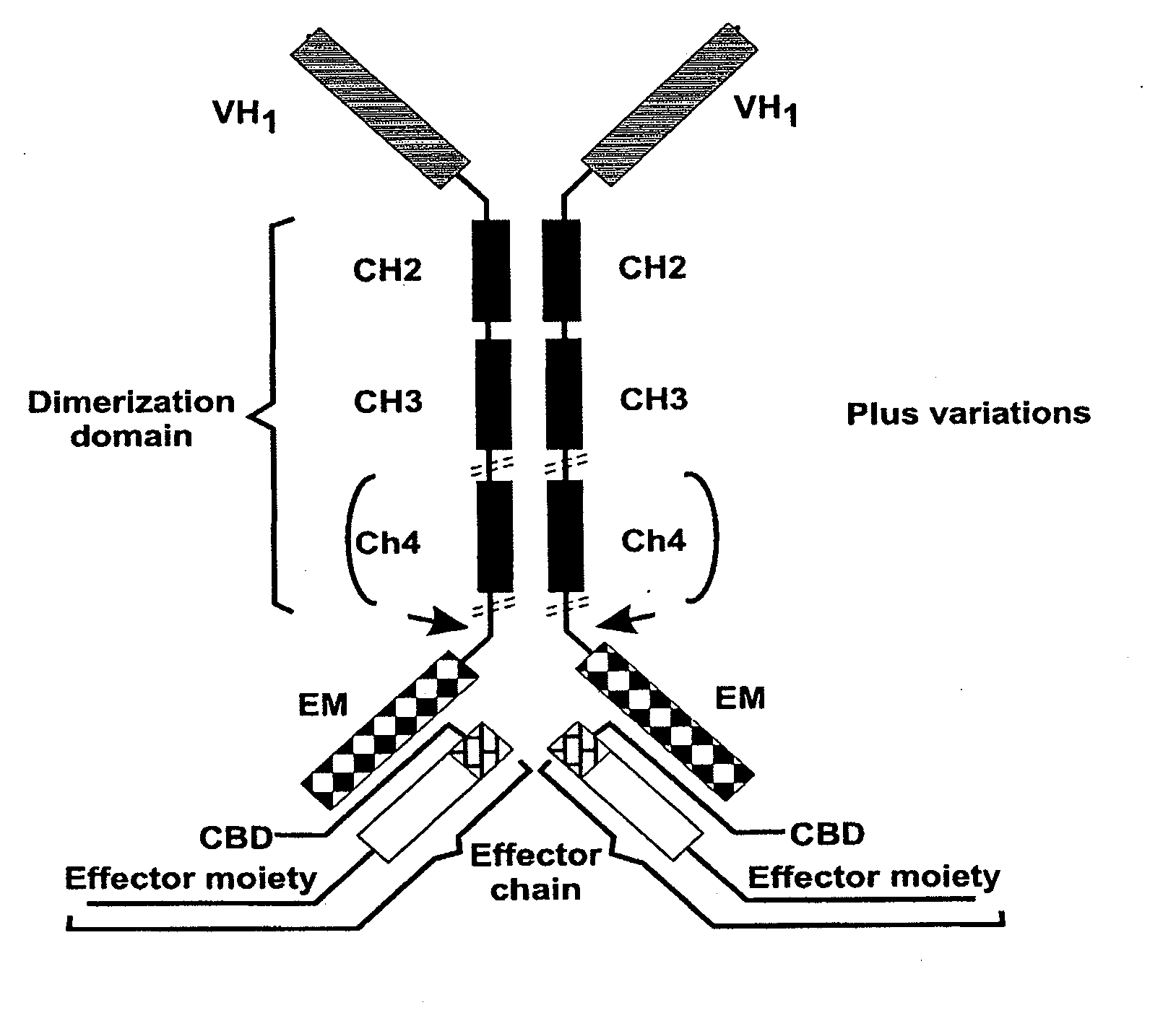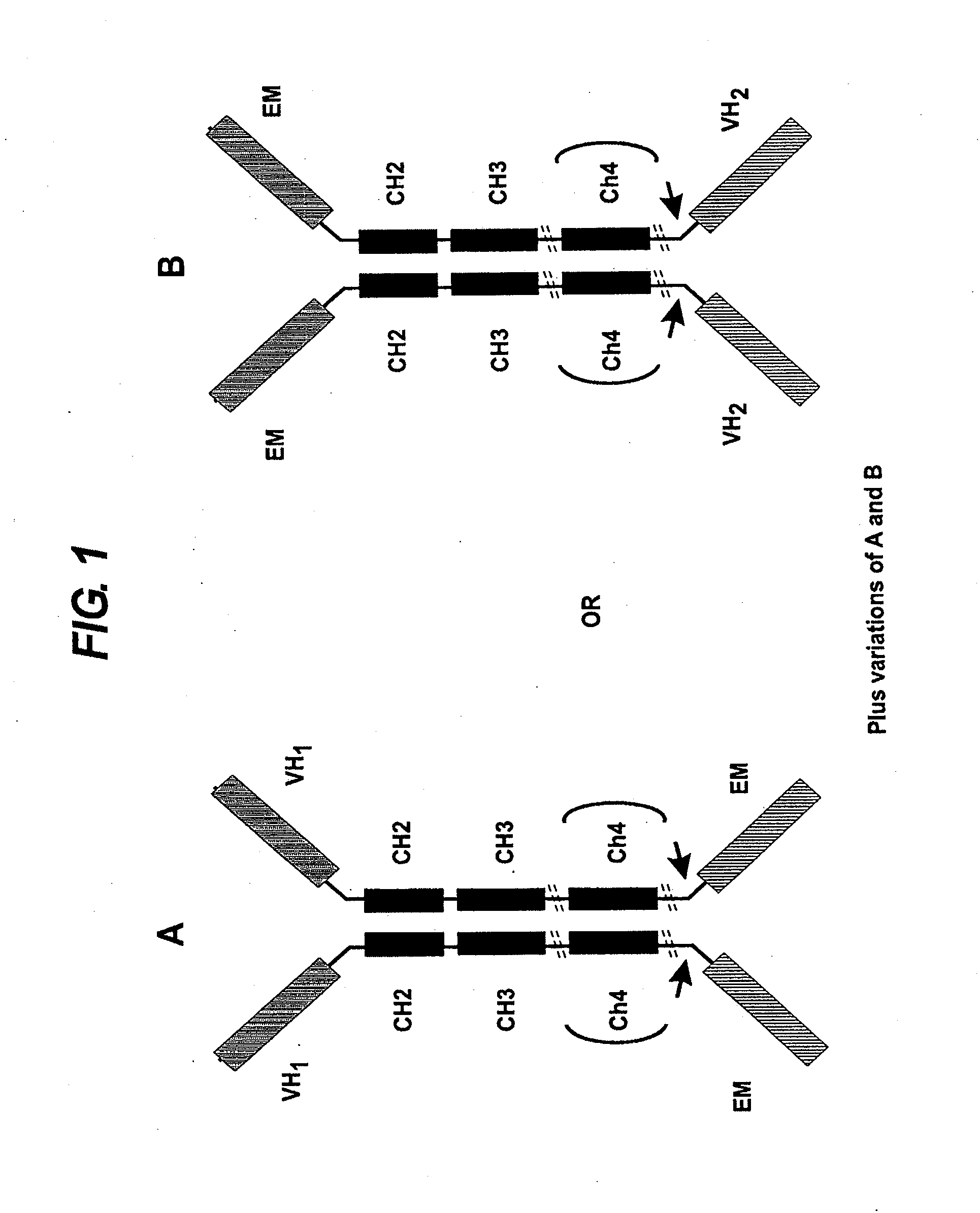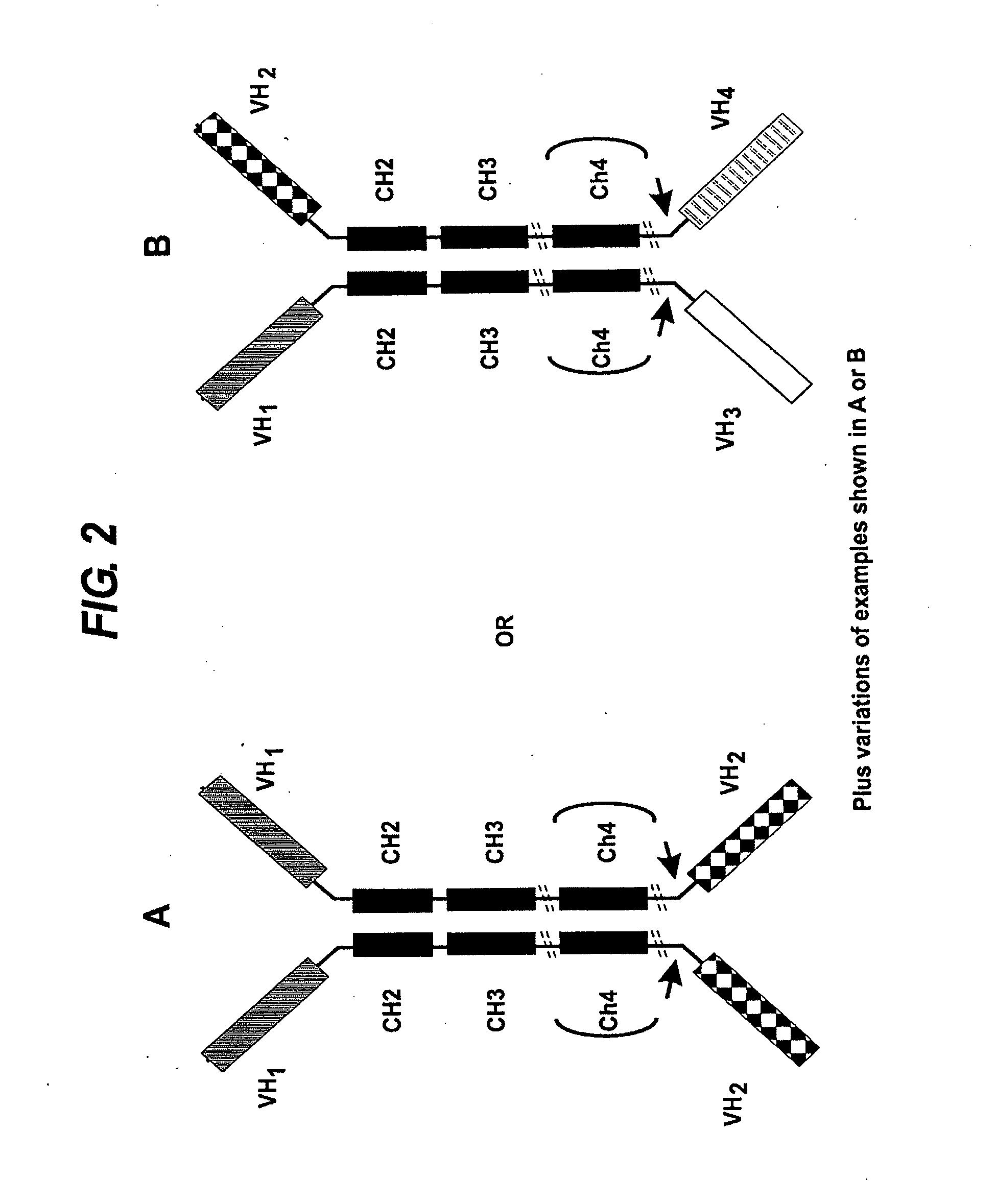Binding molecules
a technology of binding molecules and antibodies, which is applied in the field of binding molecules, can solve the problems of limiting the potential of antibody-based therapies, high production costs and capital costs of antibody manufacturing by mammalian cell culture, and no antibody as yet used to manufacture marketed therapeutic products, etc., and achieves the effect of improving solubility
- Summary
- Abstract
- Description
- Claims
- Application Information
AI Technical Summary
Benefits of technology
Problems solved by technology
Method used
Image
Examples
example 1
[0268]In preliminary experiments, transgenic mice were prepared to express a heavy chain locus wherein two llama VHH exons were linked to the human heavy chain diversity (D) and joining (J) segments, followed by the Cμ, Cδ, Cγ2, Cγ3 human constant region genes and human heavy chain immunoglobulin 3′ LCR. The human Cγ2 and Cγ3 genes contained a G to A splice mutation. The presence of the Frt site enabled the generation of a single copy transgenic mouse from a multi-copy transgene array by Flp mediated recombination. However, sequences from the transgenic locus with a G to A splice mutation, showed aberrant splicing but incomplete CH1 removal (FIG. 9).
Constructs
[0269]To overcome this problem, a genomic cosmid library was screened for clones containing the VH genes using standard methods. One (or more) different germline VHs were randomly chosen based on their sequence (five genera classes in the case of human VH's). Hydrophilic amino acid codons were introduced at positions 42, 49, 50...
example 2
[0300]The bi-specific bi-valent antibody was generated by combining two heavy chain only mono-specific antibodies. The first antibody forms the backbone bringing in the first specificity and the effector functions (variable region and constant region respectively). This was combined with the second antibody with the second specificity via a newly designed hinge. This hinge was similar to the existing IgG2 hinge sequence but was altered by replacing the cysteins with prolines to prevent crosslinking of the cysteins in the antibody dimer and providing extra flexibility via the prolines to prevent the second antibody being spatially constrained, which otherwise may have inhibited its function.
[0301]The starting backbone antibody was an antibody raised against the E. coli HSP70 protein. The HSP70 antigen was injected into transgenic mice that contained a heavy chain only antibody locus as described in (see above FIG. 14). A monoclonal antibody was raised from these animals by standard h...
example 3
[0322]An expression vector encoding a polypeptide complex comprising: a heavy chain including a binding domain which binds to PSCA (prostate stem cell antigen), an assembly domain consisting the leucine zipper motif of Jun and antibody hinge, CH2 and CH3 domains; and a light chain including a complementary assembly domain consisting of the leucine zipper motif of Fos is constructed using molecular biology techniques as described in Sambrook et al ((1989) Molecular Cloning—A Laboratory Manual, Cold Spring Harbor Laboratory Press).
[0323]The expression vector is then transferred to a suitable host cell by conventional techniques to produce a transfected host cell for optimized expression of the vector. The transfected or transformed host cell is then cultured using any suitable technique known to these skilled in the art to produce the polypeptide complex of the invention.
Once produced, the polypeptide complexes are purified by standard procedures of the art, including cross-flow filtr...
PUM
| Property | Measurement | Unit |
|---|---|---|
| solubility | aaaaa | aaaaa |
| soluble | aaaaa | aaaaa |
| affinity | aaaaa | aaaaa |
Abstract
Description
Claims
Application Information
 Login to View More
Login to View More - R&D
- Intellectual Property
- Life Sciences
- Materials
- Tech Scout
- Unparalleled Data Quality
- Higher Quality Content
- 60% Fewer Hallucinations
Browse by: Latest US Patents, China's latest patents, Technical Efficacy Thesaurus, Application Domain, Technology Topic, Popular Technical Reports.
© 2025 PatSnap. All rights reserved.Legal|Privacy policy|Modern Slavery Act Transparency Statement|Sitemap|About US| Contact US: help@patsnap.com



